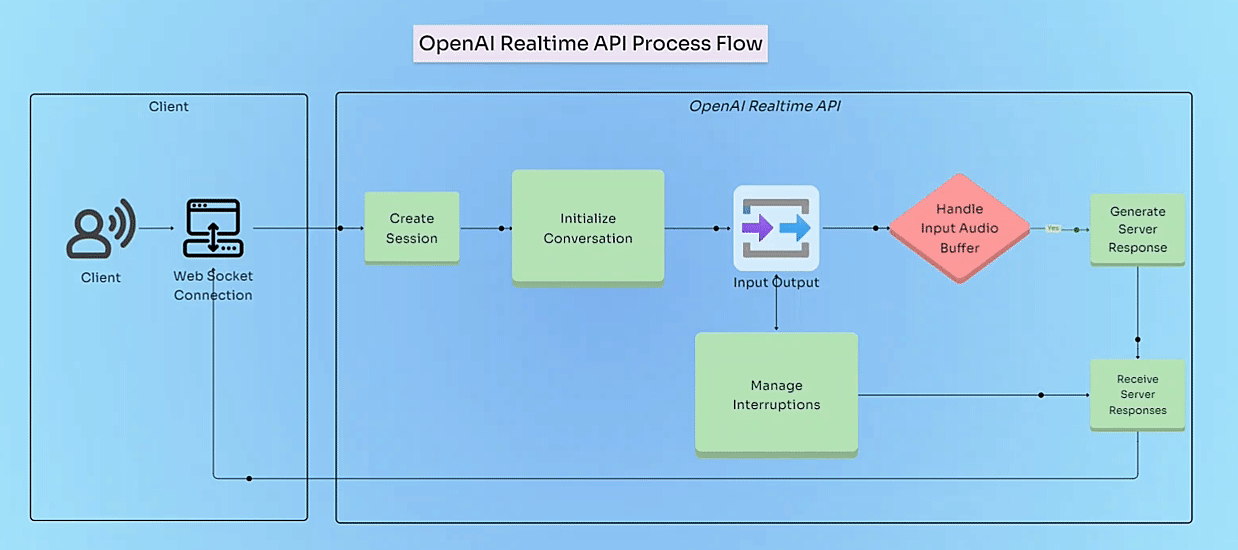First Impressions
When OpenAI announced the new Advanced Voice mode, I was genuinely excited. My imagination lit up with all kinds of ideas for building with it. Unfortunately, I haven’t been granted access yet — perhaps due to a staggered rollout in the European Union. Still, the technology behind it is incredibly impressive.
What is the Realtime API?
OpenAI’s Realtime API enables low-latency, multimodal conversational experiences. It allows:
- Speech-to-speech interactions: Enabling dynamic, bidirectional conversations.
- Streaming audio and text: Continuous, real-time input/output.
- Function calling: Tapping into external tools and APIs for custom actions.
Conversation Lifecycle
The Realtime API follows a continuous loop of well-orchestrated steps to power interactions:
- Connection Establishment: A WebSocket connection is established between the client and the Realtime API.
- Session and Conversation Setup: The server initializes the session and prepares the conversation.
- User Input Handling: The client sends user input (text or audio) to the server.
- Server Processing: The input is processed and a response is generated.
- Response Delivery: The server streams back the response as audio, text, or function calls.
- Function Execution (if applicable): The client runs assistant-requested functions and returns results to the server.
- Conversation Continuation: This cycle repeats with each new user input.
- Interruption Handling: Mid-response interruptions are processed and the assistant adapts accordingly.
- Session Termination: The WebSocket connection is closed, ending the session.

Final Thoughts
The potential use cases for this are endless — from personal assistants to creative tools to accessibility aids. The only downside right now? Cost. It’s still on the high side for hobby use, but I’m looking forward to exploring more when access and pricing become more manageable.
Stay tuned — I’ll be sharing more experiments and insights soon!